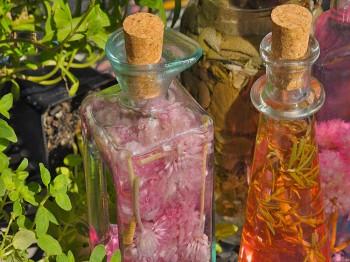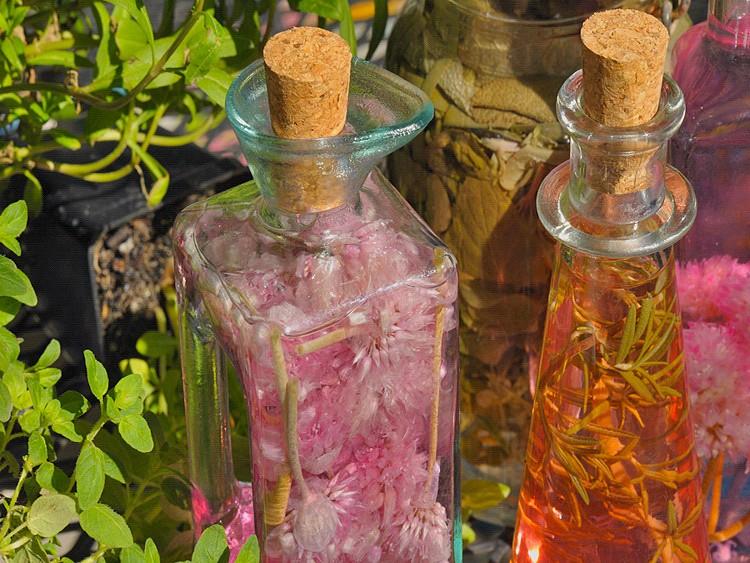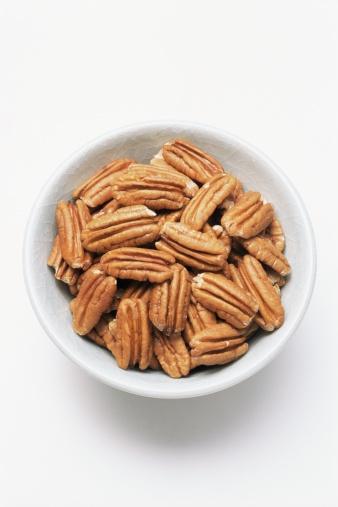
Herbal vinegars from freshly cut herbs from the garden are easy, economical, decorative, tasty, and fun to make. Cat Rooney/The Epoch Times

Herbal vinegars from freshly cut herbs from the garden are easy, economical, decorative, tasty, and fun to make. Cat Rooney/The Epoch Times
Herbal vinegars are easy to make and look beautiful on your kitchen counter. They also make a welcoming gift for any occasion.






